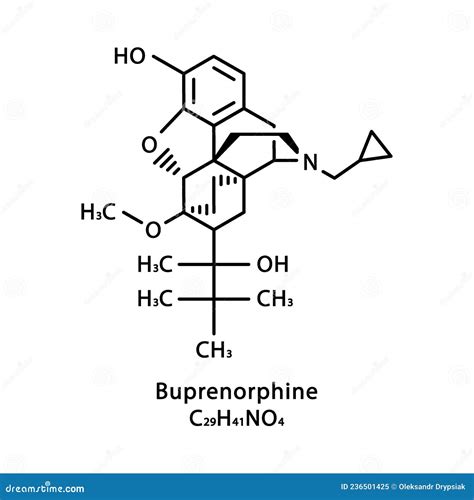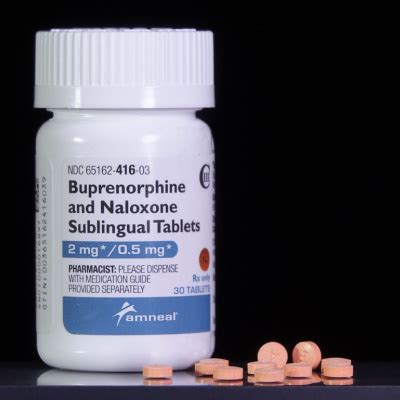The struggle with opioid addiction is a harsh reality for millions of people worldwide. The journey to recovery can be daunting, filled with challenges that seem insurmountable. However, advancements in medical science have led to the development of effective treatments that can significantly ease this path. One such breakthrough is the use of buprenorphine sublingual for addiction treatment. This medication has revolutionized the approach to managing opioid dependency, offering a more accessible and less invasive method compared to traditional treatments.
Understanding Buprenorphine Sublingual

Buprenorphine sublingual is a form of medication-assisted treatment (MAT) designed to help individuals overcome opioid addiction. It works by activating the opioid receptors in the brain, which helps to reduce withdrawal symptoms and cravings without producing the same “high” as other opioids. This partial activation is crucial, as it allows patients to manage their addiction more comfortably, making the recovery process less painful and more sustainable.
How It Works
The mechanism of action of buprenorphine is complex, involving the partial agonism of the mu-opioid receptor and antagonism of the kappa-opioid receptor. This dual action not only reduces the desire to use opioids but also diminishes the withdrawal symptoms that often hinder recovery efforts. The sublingual form of buprenorphine is placed under the tongue, where it dissolves, allowing for rapid absorption into the bloodstream. This method of administration enhances the drug’s bioavailability, ensuring that the patient receives the full benefit of the medication.
Benefits of Buprenorphine Sublingual

The use of buprenorphine sublingual in addiction treatment comes with several benefits, making it an attractive option for those seeking to overcome opioid dependency.
- Reduced Withdrawal Symptoms: One of the most significant advantages of buprenorphine is its ability to alleviate the harsh withdrawal symptoms associated with opioid cessation. By managing these symptoms, patients are more likely to stay on the path to recovery.
- Minimized Cravings: Buprenorphine’s action on opioid receptors also helps in reducing cravings, further assisting patients in avoiding relapse.
- Lower Risk of Overdose: Compared to full opioid agonists, buprenorphine has a ceiling effect, meaning that beyond a certain dose, it does not produce additional euphoric effects, thus reducing the risk of overdose.
- Outpatient Treatment: The simplicity of administration and the lower risk of dependency make buprenorphine an ideal candidate for outpatient treatment programs, allowing patients to receive care while maintaining their daily routines.
- Flexibility and Accessibility: Buprenorphine sublingual can be prescribed by certified healthcare providers in various settings, including primary care offices, making addiction treatment more accessible to a wider population.
Implementing Buprenorphine Sublingual in Treatment Plans
The integration of buprenorphine sublingual into a comprehensive treatment plan is crucial for its success. This typically involves a multidisciplinary approach, including counseling, behavioral therapy, and social support, alongside medication.
- Initial Induction: The process begins with an initial induction phase, where the patient is first introduced to buprenorphine under medical supervision. This phase is critical, as it allows healthcare providers to monitor the patient’s response to the medication and adjust the dosage as necessary.
- Stabilization: Once the patient is comfortable with the medication, they enter a stabilization phase, where the goal is to find a maintenance dose that effectively manages withdrawal symptoms and cravings without causing significant side effects.
- Maintenance: The maintenance phase is where the patient continues on their prescribed regimen, with regular follow-ups to monitor progress and make any necessary adjustments.
- Tapering: For some patients, the ultimate goal may be to taper off buprenorphine entirely. This process must be carefully managed, as abrupt cessation can lead to withdrawal symptoms.
Frequently Asked Questions
What are the common side effects of buprenorphine sublingual?
+Common side effects include nausea, vomiting, headache, and constipation. However, these are typically mild and temporary.
Can buprenorphine sublingual be used for pain management?
+While buprenorphine can be used for pain, its primary indication for sublingual administration is the treatment of opioid addiction. For pain management, other formulations may be more appropriate.
Is buprenorphine sublingual addictive?
+Like all opioids, there is a potential for dependency. However, buprenorphine's unique pharmacological profile makes it less likely to cause euphoria, reducing the risk of misuse compared to full opioid agonists.
Conclusion

Buprenorphine sublingual represents a significant advancement in the treatment of opioid addiction, offering a safer, more manageable, and effective approach to recovery. Its ability to alleviate withdrawal symptoms, reduce cravings, and minimize the risk of overdose makes it an invaluable tool in the fight against opioid dependency. As with any medical treatment, it’s essential to use buprenorphine under the guidance of a healthcare professional, as part of a comprehensive treatment plan that includes psychological support and counseling. By leveraging the benefits of buprenorphine sublingual, individuals struggling with opioid addiction can embark on a more hopeful journey towards recovery, improving their quality of life and paving the way for a future free from the shackles of addiction.


